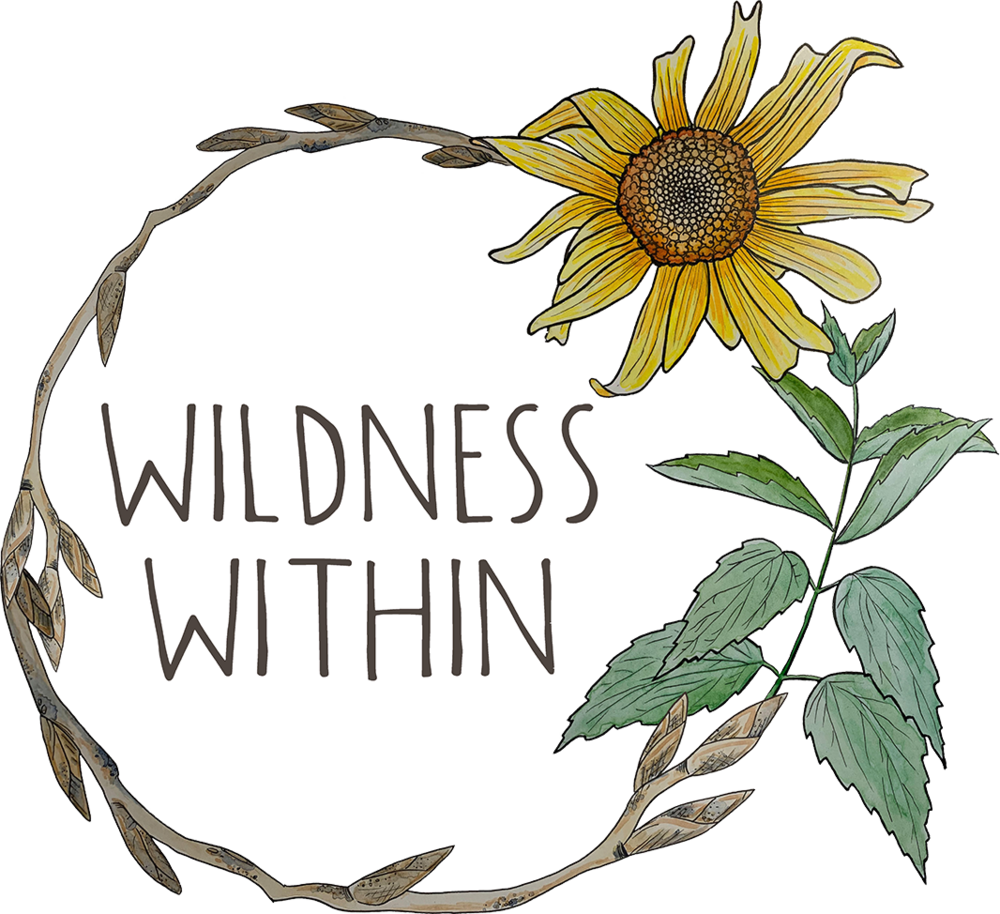Tea invites us to slow down, take a sip, listen to our bodies and feel the experience. Herbal teas offer us a way to support our health on a daily basis. The more we sit and enjoy the experience of herbal teas, the more the herbs reveal themselves. We can create a deeper relationship with herbs in this way. They can speak to your body’s needs, if you listen.
One of the best ways to acquaint yourself with a tea or an herb is to start simple. Try one. Make a strong tea or an infusion. Drink one cup of that tea for an entire week (or month). Experience the taste, smell, feel, color and listen to how your body responds. Once you know how that herb works, then you will have a greater awareness of combining herbs for formulation.
Herbal teas are generally considered a beverage- not a medicine. Medicinal teas are made by decoctions or infusions- a longer steeping and higher quantity of herb. Herbal tea beverages are enjoyed for pleasure– offering subtle support emotionally and physically. Often times, herbal teas contain aromatic herbs so that the flavor and aroma are enhanced.
How to make a tea
1 Tbsp. dried herb (1 teabag)
1 cup boiling water
Place dried herbs in strainer/tea-ball/tea-bag and place in cup. Pour boiling water over the herbs and let steep for 5-15 minutes (time recommendation listed below). Strain herbs out and drink immediately.
General Steeping Times for Herbal Teas:
Flowers: steep 3-5 minutes
Berries: steep 3-7 minutes
Leaves: steep 3-10 minutes
Roots: Steep 5-15 minutes or boil for 5 minutes
Bark: Steep 5-15 minutes or boil for 3-5 minutes
It is best to use glass or clay for brewing teas.
Dosage & Preservation
Herbal teas are meant to be used immediately– quick pleasure and warm support. They are not to be preserved and stored over one day. I recommend drinking 1-3 cups per day to enjoy the flavors of our herbal allies.
Formulation & Herbal Actions:
Mixing and formulating herbal teas can be quite technical once we explore the different plant chemistries. It can also be quite intuitive once you know the energetics and flavors of the plants. Herbs have different expressions that can be expressed in their flavors and also their chemistry.
An accessible way to begin formulating is to start with plants that you know. Plants that are accessible. Plants that are commonly mixed together. Plants in pairs. For example, lavender and chamomile are both calming herbs that have a pungent and bitter taste- they are a great combination before bedtime. Sometime the plants are growing together and nature is telling you to combine them. Sometimes they have similar herbal actions. And sometimes the herbs bring you joy when you look or smell them- making for a heart opening tea combination. Combining herbs can be unpredictable but you get better the more you practice.
Nature’s Formulas
What is growing next to each other.
What is flowering at the same time.
Seasonal Feels; summertime flowers and fruits, springtime leaves, autumn roots, and winter spices
Example: Springtime Nettles, Cleavers and Raspberry Leaf
Tasting a Formula
Taste the aroma of the herbs- open your sensation to the five flavors of the herbs:
1. Sweet
2. Salty
3. Bitter
4. Sour
5. Pungent
Start noting the flavors of the herbs by taking a dried/fresh piece of plant matter (for example spearmint) and focus your attention on the sensations in your mouth and nose:
· Does if taste sweet, sour, bitter, or spicy?
· Is one flavor more dominant?
· Is there a tactile nature to what you are tasting, such as texture, astringency (a drying feeling) or numbing?
· How does the herb make you feel? What does the taste remind you of?
This exercise helps you build a strong conscious memory of the herb. It also helps you start to recognize taste patterns that reflect herbal actions.
Making a Formula
What is the purpose of the tea? What do we want to accomplish by drinking it? What actions are we looking for?
Formula Structure:
Main Herb: “star” herbs. The largest amounts of herbs in the formula that have the actions and effects that we are wanting to use.
Supporting Herb: “boosting” herbs. These herbs are used in a smaller amount than the main herb. They help the actions of the main herbs and also provide a gift of their own.
Catalyst Herb: These are warming and aromatic herbs that help stimulate circulation and further the body’s ability to absorb the medicinal effects of the Main and Supporting herbs. These herbs raise the level of action in the formula.
Corrigent Herb: Corrigent herbs help balance the formula. They are warming, cooling, moistening or drying depending on what is needed for the individual. These plants can be quite powerful in their actions (and tastes) and are used in small quantities compared to the main and supporting herbs.
Example: “Lung Tea”
Main: Mullein
Supporting: Horehound
Catalyst: Elecampane, Licorice Root and Ginger
Corrigent: Slippery Elm and Marshmallow
